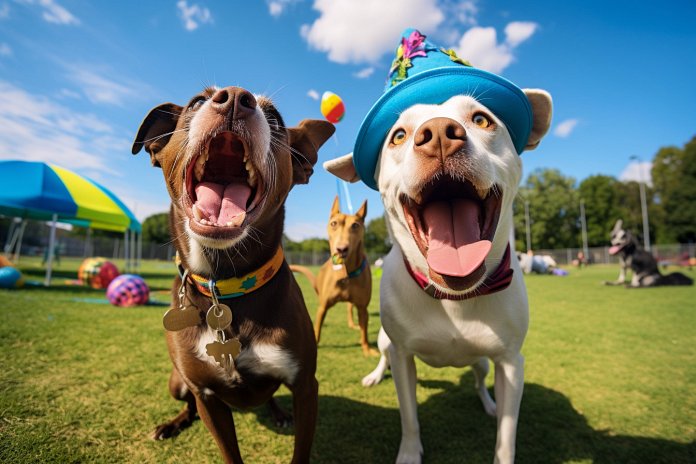
Many of us have experienced moments of awkwardness, both for ourselves and for our pets. While humans feel awkward due to embarrassment, dogs feel uncomfortable or distressed in certain situations. It’s important to differentiate between these feelings because dogs do not experience awkwardness in the same way humans do. Instead, they display signs of discomfort or distress. Understanding your dog’s body language can help you determine how they are feeling in various situations.
Signs of Discomfort
Your dog may show signs of discomfort in certain situations, such as struggling, growling, or whining. These reactions vary depending on the dog’s personality and the specific situation. It’s crucial to remember that fear, aggression, or discomfort should not be confused with awkwardness in dogs. Dogs do not have the concept of feeling awkward or embarrassed.
Body Language
Your dog’s body language can provide clues about their discomfort. Signs such as growling, whining, tail tucking, or baring teeth indicate that your dog is uncomfortable. Other signs include turning its back, lying with its head in its paws, or wriggling and struggling. These cues can help you understand your dog’s discomfort in different situations.
The History and Science of Dog Discomfort
Understanding canine emotions can be challenging because dogs have become domesticated and are considered part of the family. Dogs experience pain and fear similarly to humans, but secondary emotions like embarrassment or awkwardness are difficult to determine. Dogs may display signs that appear awkward to us, but they do not understand the concept of awkwardness. They simply feel uncomfortable or distressed in certain situations, albeit not for the same reasons as humans.
Helping Your Dog Feel More Comfortable
To help your dog feel more comfortable, it’s essential to pay attention to the signs of discomfort mentioned earlier. Don’t assume that a situation causing embarrassment or awkwardness for you will have the same effect on your dog. Instead, identify signs of discomfort and determine the cause. If your dog consistently displays discomfort in a particular situation, consider removing them from that environment or finding alternative ways to interact that don’t cause distress. Proper socialization, especially during puppyhood, can also help prevent discomfort or distress in social situations.
In conclusion, while our dogs may display signs of awkwardness in certain situations, it is important to remember that they do not feel the same emotions as humans. Dogs feel uncomfortable or distressed in certain situations, but their reactions are not driven by embarrassment or awkwardness. By understanding their body language and providing proper socialization, we can help our dogs feel more comfortable and reduce their discomfort in various situations.

Tips & Things to Know
1️⃣ Dogs do not experience awkwardness or embarrassment as humans do, instead, they feel discomfort or distress in particular situations. Owners should not project their own feelings onto their pets, but rather observe their behavior to understand their dogs’ comfort levels.
2️⃣ Pay close attention to your dog’s body language to understand when they are uncomfortable. Signs such as growling, whining, tail tucking, exposed teeth, turning its back, lying with head in paws, and wriggling and struggling indicate that a dog is uncomfortable or distressed.
3️⃣ If your dog often appears uncomfortable in certain situations, consider ways to make it feel more at ease. This could involve changing your approach to physical affection, like hugging less tightly, or finding ways to properly socialize your dog to prevent discomfort in social situations.
Frequently Asked Questions, Answered ✅
1. What are some signs that indicate a dog is feeling uncomfortable or awkward in a certain situation?
– Some signs include struggling and wriggling, baring teeth or growling, whining, turning its back, lying with head in paws, and tail tucking.
2. Do dogs experience awkwardness or embarrassment in the same way humans do?
– No, dogs do not have the concept of feeling awkward or embarrassed. Their discomfort in certain situations is more about feeling uncomfortable or distressed.
3. Can dogs feel secondary emotions like embarrassment or awkwardness?
– Some researchers believe that dogs may be able to feel emotions similar to awkwardness, but not in the same way as humans and not for the same reasons.
4. How can I help my dog feel more comfortable in uncomfortable situations?
– Look out for signs that your dog is not entirely comfortable in a particular situation and determine what is causing its discomfort. If necessary, remove your dog from that situation or find ways to make it feel more comfortable, such as finding alternative ways to cuddle or interact.
5. How can proper socialization help prevent dogs from feeling uncomfortable or distressed in social situations?
– Proper socialization, preferably during puppyhood, can help dogs become more comfortable and confident in various social situations, reducing the likelihood of them feeling out of sorts or distressed.